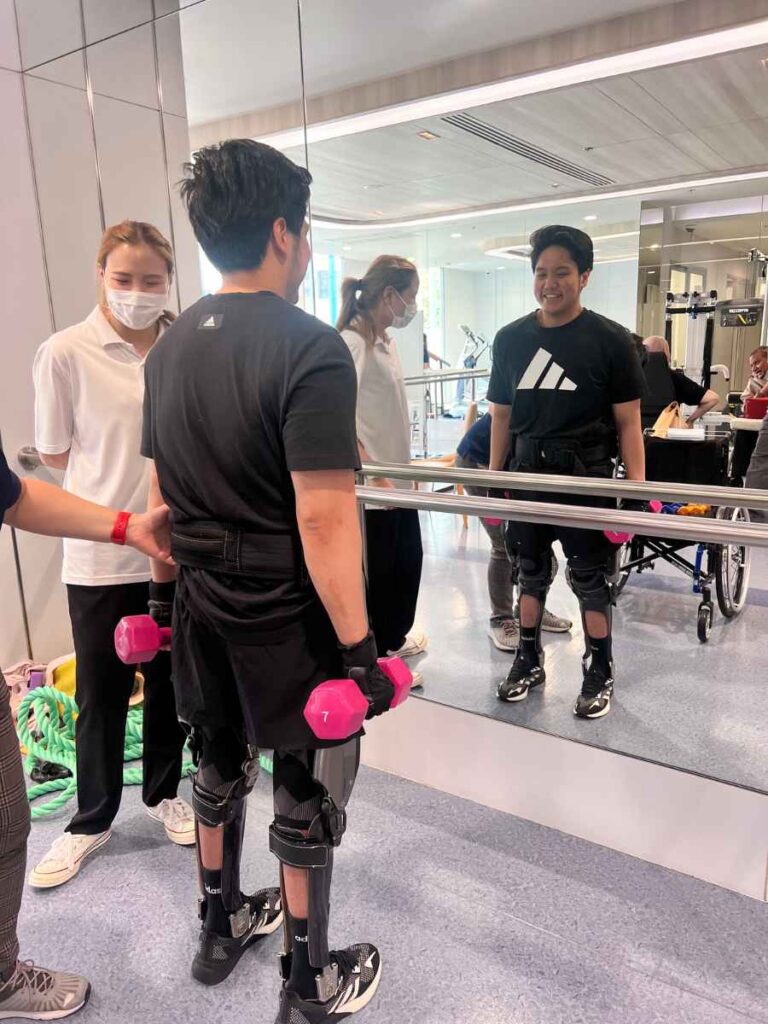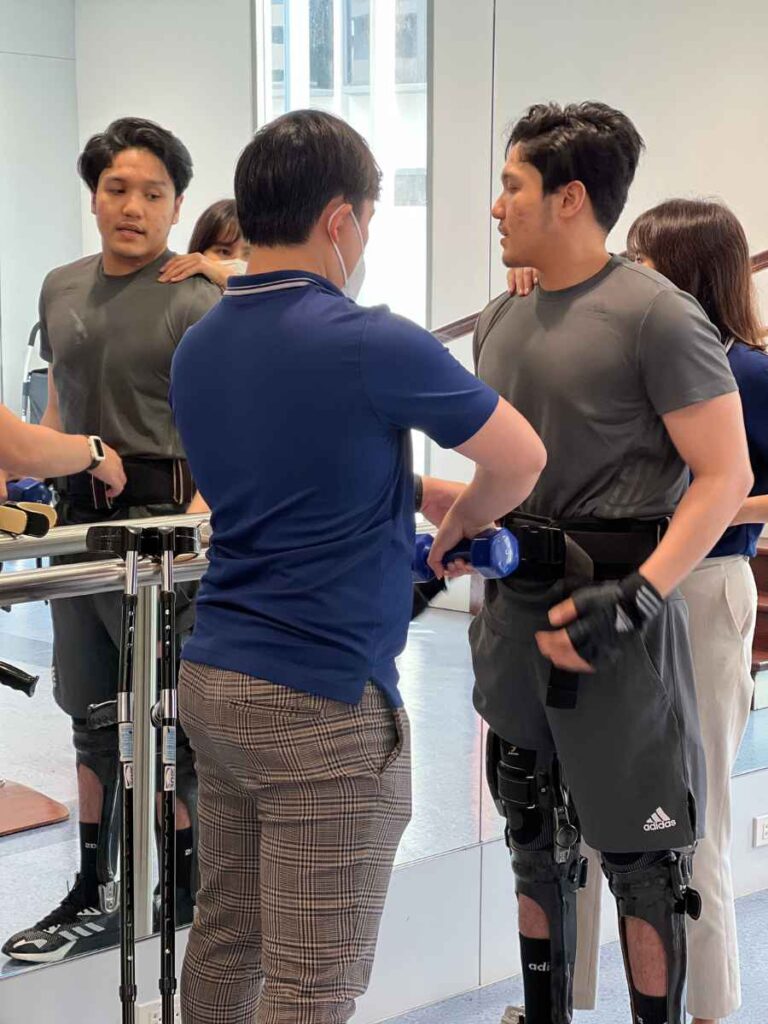Spinal cord injury treatment was, for a long time, focused almost entirely on condition management in the form of physical and occupational therapy. Recent years have seen more innovative treatments come to the fore through stem cell treatment, neuromodulation and more. Verita Neuro is one of the providers working to ensure these innovations are available to the public, and not restricted to clinical trials. The LamiSpine procedure is one example of a treatment protocol which was developed by Verita Neuro.
What is LamiSpine Treatment?
The name LamiSpine is a neologism, derived from the word ‘laminectomy’ and spinal cord injection. The procedure is designed to create an optimized delivery method for stem cells, where they are directly injected into the lesion site after a laminectomy is performed. Laminectomy is a surgical process of removing a small part of the posterior component of the vertebra called the “Lamina”. This makes way for a small needle to be inserted inside the spinal cord to deliver stem cells. The aim is to promote the growth of fibers and neurons at the level of injury. It is a form of regenerative medicine.
Unlike other regenerative medical processes, Lamispine delivers the recommended dose of stem cells directly into the lesion site. This significantly enhances the chances of recovery as compared to other delivery methods, such as intravenous or intrathecal injections alone. However, the Lamispine procedure is combined with intravenous and intrathecal injections. The purpose of intravenous injections is to promote anti-inflammatory effects which may be neuroprotective. Intrathecal injections provide stimulation to the resident neural stem cells, as well as promoting direct regeneration of spinal pathways. Stem cells, once injected into the cerebrospinal fluid (which surrounds the brain and spinal cord), release neuroprotective proteins including nerve growth factor (NGF) and brain derived neurotrophic factor (BDNF). These help to protect and repair the injured nerve fibers. We believe this combination of 3 different delivery methods, targeting the injured spinal cord from 3 different angles, can produce better recovery as compared to any single delivery method alone.
Unlike other regenerative medical processes, Lamispine delivers the recommended dose of stem cells directly into the lesion site. This significantly enhances the chances of recovery as compared to other delivery methods, such as intravenous or intrathecal injections alone. However, the Lamispine procedure is combined with intravenous and intrathecal injections. The purpose of intravenous injections is to promote anti-inflammatory effects which may be neuroprotective. Intrathecal injections provide stimulation to the resident neural stem cells, as well as promoting direct regeneration of spinal pathways. Stem cells, once injected into the cerebrospinal fluid (which surrounds the brain and spinal cord), release neuroprotective proteins including nerve growth factor (NGF) and brain derived neurotrophic factor (BDNF). These help to protect and repair the injured nerve fibers. We believe this combination of 3 different delivery methods, targeting the injured spinal cord from 3 different angles, can produce better recovery as compared to any single delivery method alone.

What stem cell types are used in LamiSpine treatment?
Verita Neuro uses amniotic fluid stem cells, which are a premature type of mesenchymal stem cells, derived from the amniotic fluid. These stem cells are shown to have differentiated into nerve cells, promoted axonal growth, reduced inflammation and stimulated the release of protective growth factors in the body which help repair damage after spinal cord injury. These properties can restore some of the lost spinal pathways after an injury and improve functions below the level of injury. Mesenchymal stem cells are also used. These are derived from the umbilical cord tissue and have also shown neuroprotective properties and most importantly, strong anti-inflammatory properties.
What is the treatment experience like?
The procedure itself is very simple and is a type of minimally invasive surgery which does not require extensive operation. During the procedure, a small part of the vertebra is removed at the targeted site, a thin needle is inserted and stem cells are delivered at multiple locations along the injury.
Once patients are recovered from the surgery, usually within a few days, they begin physiotherapy, occupational therapy and paired associated stimulation. This is a combination of transcranial magnetic stimulation and peripheral electrical stimulation as well as functional training. Extensive rehabilitation and muscle training has shown great benefits in spinal cord injury patients by increasing motor function, muscle strength, and balance and coordination. It is believed by the scientific community that extensive muscle training results in new nerve pathways along the injured spinal cord, promoting communication between spinal cord and the brain.
Once patients are recovered from the surgery, usually within a few days, they begin physiotherapy, occupational therapy and paired associated stimulation. This is a combination of transcranial magnetic stimulation and peripheral electrical stimulation as well as functional training. Extensive rehabilitation and muscle training has shown great benefits in spinal cord injury patients by increasing motor function, muscle strength, and balance and coordination. It is believed by the scientific community that extensive muscle training results in new nerve pathways along the injured spinal cord, promoting communication between spinal cord and the brain.

What are the possible side effects?
There is a small risk of developing fever after surgery, which generally lasts for 24 hours. Some patients experience neuropathic pain after the surgery, which may persist for a few days and is treated with morphine and other pain medications. As with any surgery, there is a mild risk of infection. In very few cases a severe infection had been reported, requiring IV antibiotics. Some patients may develop spasticity, particularly those with pre-existing spasticity or spasms which may increase in intensity or frequency. There is a small risk of cerebrospinal fluid leakage after the surgery, leading to persistent headache. Intravenous injections may produce a mild to moderate immune response in the form of skin rash, shivering or mild respiratory insufficiency. Lumbar injections may produce lower back pain, fever or headache.
What is Verita Neuro’s Experience With LamiSpine?
Verita Neuro has been treating patients with LamiSpine surgery since 2018 which includes patients with injury levels at cervical, thoracic or lumbar spinal levels. The majority of the patients showed recovery in motor and sensory functions, with some patients regaining the ability to start taking assisted steps. Patients reported improvements in bowel and bladder functions, sexual functions, neuropathic pain, as well as improvements in autonomic functions more generally. We have also seen success when combining LamiSpine with our epidural stimulation treatment procedure.
References
- Tsai MS, Lee JL, Chang YJ, Hwang SM. Isolation of human multipotent mesenchymal stem cells from second-trimester amniotic fluid using a novel two-stage culture protocol. Hum Reprod. 2004 Jun:19(6):1450-1456.
- Prusa AR, Marton E, Rosner M, Bernaschek G, Hengstschläger M. Oct-4- expressing cells in human amniotic fluid: a new source for stem cell research? Hum Reprod. 2003 Jul:18(7):1489-1493.
- Tsai MS, Hwang SM, Tsai YL, Cheng FC, Lee JL, Chang YJ. Clonal amniotic fluid-derived stem cells express characteristics of both mesenchymal and neural stem cells Biol Reprod. 2006 Mar:74(3):545-551.
- Kim J, Lee Y, Kim H, Hwang KJ, Kwon HC, Kim SK, Cho DJ, Kang SG, You J. Human amniotic fluid-derived stem cells have characteristics of multipotent stem cells Cell Prolif. 2007 Feb:40(1):75-90.
- Barnabe-Heider F, Frise J. Stem Cells for Spinal Cord Repair Cell Stem Cell. 2008 Jul:3(1):16-24.
- Sekhon, LH, Fehlings MG. Epidemiology, demographics, and pathophysiology of acute spinal cord injury Spine. 2001 Dec 15:26(4), S2–S12.
- Sobani ZA, Quadri SA, Enam SA. Stem cells for spinal cord regeneration: Current status Surg Neurol Int. 2010 Dec 25:1:93.
- Garbossa D, Fontanella M, Fronda C, et al. New strategies for repairing the injured spinal cord: the role of stem cells Neurol Res. 2006 Jul:28(5), 500–504.
- Coutts M, Keirstead HS. Stem cells for the treatment of spinal cord injury Experimental Neurology. 2008 Feb:209(2), 368–377.
- Cao FJ, Feng SQ. Human umbilical cord mesenchymal stem cells and the treatment of spinal cord injury Chin Med J (Engl). 2009 Jan 20:122(2):225-31.
- Totoiu MO, Keirstead HS. Spinal cord injury is accompanied by chronic progressive demyelination J Comp. Neurol. 2005 Jun 13:486(4)373–383..







